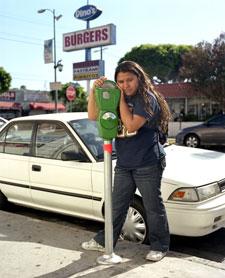Earlier this year, LACMA commissioned London-based artist Marysa Dowling to work with students in the Los Angeles Unified School District as part of Art Programs with the Community: LACMA On-Site. The result, Journeys, is a collection of images both from the students and from Dowling. The exhibition is on view at Charles White Elementary School. LACMA's Manager of School and Teacher Programs, Elizabeth Gerber, sat down with Dowling to discuss the project. Midway through, Dowling turned the tables and interviewed Gerber. Today we present the first part of the interview, with part II to follow tomorrow.
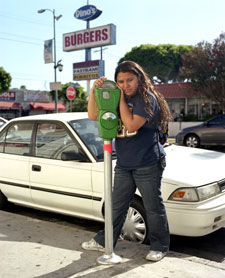
Photographs by Marysa Dowling
EG: Your artistic process often involves many decisions by the individuals you are photographing. Could you describe your process for this project?
MD: There are several pieces of interconnected work within the overall project, Journeys. All of them are portraiture projects with several intentions: to look at how people move around the city they live in; to explore how people communicate and engage with the city and with others; how they use and see everyday objects; and most importantly, how people express themselves in front of, and communicate through, the camera.
I wanted to create a piece of work that let, to a certain degree, other peoples' choices shape how the project would evolve and who would be involved. So for the main pieces I came up with a set of rules—or rather instructions—for each person to follow. I first made a series of portraits of seven people on journeys they each take regularly. I also had them incorporate an object, a blue plastic bag, which they used in one of the photographs. And I asked each of them to choose at least five other people to become involved and be photographed.
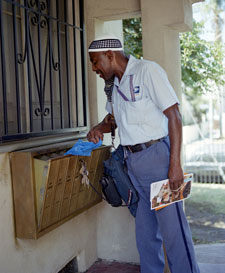
EG: Why did you propose this theme of journeys for this project?
MD: L.A. has such a particular way of being viewed by those who have never been here and has an odd familiarity to the rest of the world. Having an overarching theme that I could explore in various ways is something I often do. I also like to work on similar projects in different cities simultaneously.
Realizing how many people live totally different lives within the city seems obvious, but once you really start to see and hear about it, it's quite overwhelming. It's also amazing the connections that start to unfold.
One thing the project has done is reinforced my thoughts about how complex and problematic cities are and but also how wonderful, strange, and engaging they are. People live with similar concerns in cities everywhere.
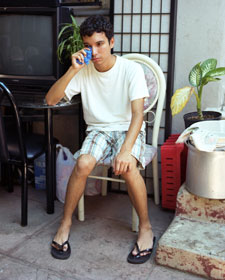
EG: Why the blue plastic bag?
MD: I began using the using this object in London, when The Photographers' Gallery in London commissioned the project entitled The Movement of an Object. I knew it had to be a common, ordinary, and ubiquitous object, something people use and engage with all the time but do so without really thinking about it. It's also important that the object can be changed, adapted, or even destroyed by the sitter as a way of enabling them to express themselves.
I use the object as a way for people to bring performative aspects to the portraits. Everyone has something creative inside of them; the choices people make and how they choose to represent themselves, this urge to express ourselves in front of the camera is what fascinates me.
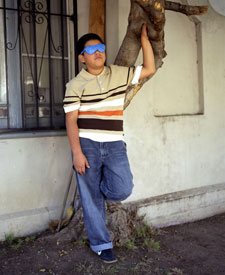
EG: The galleries include an area for people to add to the exhibition. What would you hope people might think about when adding to the space?
MD: I'd like people to bring their own stories, the small details about how they live, and make connections by adding photographs, words, or drawings. I hope people find something new through the small details in an image, while simultaneously finding recognition of something similar to their own lives.
Check back tomorrow for part II of the conversation. For more information on the exhibition, including directions and hours, click here.



